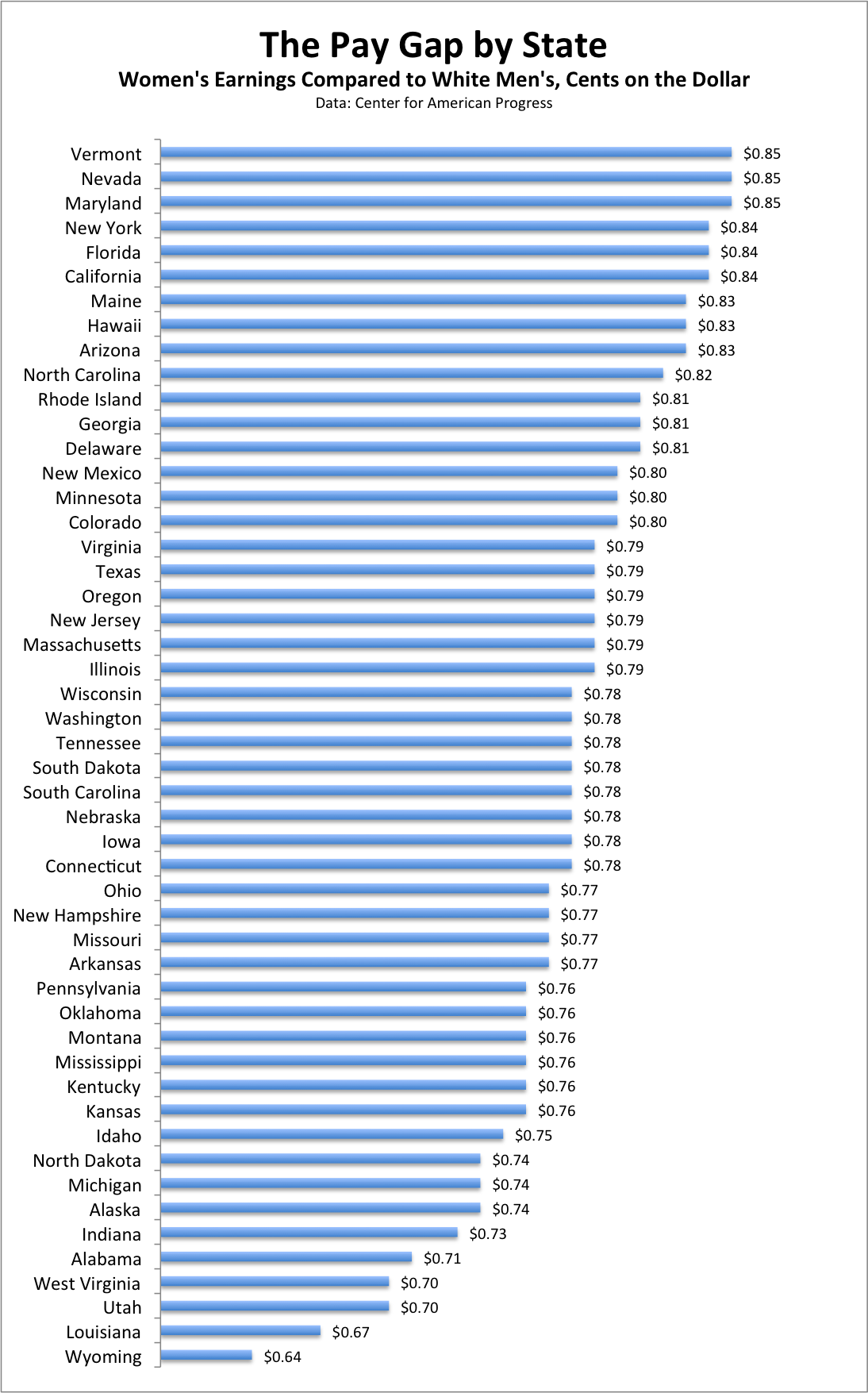The States Where Women Make the Most (and Least) Compared to Men
The wage gap is a complicated issue, but here's a simple chart showing where it's most severe.
At some point or another, you've heard the stat that American women earn just 77 cents for every dollar that men make. But what about state to state? Is it as bad in New York as, say, Ohio or Wyoming? In a new report, the Center for American Progress offers up this coast-to-coast breakdown. The pay gap ranges all the way from a low of 15 cents in places like Vermont and Nevada up to 36 cents in Wyoming. (More story after the chart. Also note: CAP tracks what women earn compared to white men specifically, though that doesn't seem to have changed the average disparity).

So what does this tell us? Before getting to that, we need to talk a little bit about the raw wage gap as a statistic. Because it has problems. Enough problems that my editor Derek Thompson and I strongly diverge on whether it's even a useful measure. (I say it is, he says it isn't.) When someone says women earn 84 cents on the dollar compared to men in New York or 70 cents on the dollar compared to men in Utah, they're comparing all female workers and all male workers at once. As a result, you sort of end up comparing apples and oranges, or in this case, software engineers and elementary school teachers. As a rule, women tend to work in lower-paying careers. They also tend to work fewer hours, thanks largely to family obligations, and often take breaks in their career to take care of children, both of which bring down their pay. When you compare women and men who work in the same kinds of jobs for similar hours and similar years, most (though not all) of the gap disappears. So the graph up above isn't really showing us the states where women face the most discrimination, in the sense of not being paid equally for equal work.*
All of that said, I do think that on a very basic level, it shows us the states where women are having the most luck matching up financially with men, whether it's because public policy gives them a leg up in the labor force, or because the local mix of industries happens to favor women (I don't think it's an accident that hospitality-heavy Florida has a relatively small gap). Though it's not an airtight relationship, states where women hold a greater percentage of management jobs seem to have a smaller pay gap.
Read more at The Atlantic .






